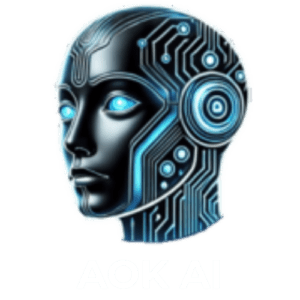5 Ways AI Will Revolutionise Content Creation in 2025
Content is no longer king. In 2025, content is empire-building. But it’s not human alone that’s fuelling this revolution. It’s Artificial Intelligence — the silent partner behind blog empires, YouTube channels, Instagram grids, and ad campaigns that scale with impossible speed and laser precision.
What used to take a content team of five, now takes one creator and an AI toolkit. From hyper-personalisation to predictive planning, AI is transforming how content is conceived, created, distributed, and optimised.
This article explores five paradigm-shifting ways AI is reshaping content creation in 2025 — with real-world examples, future-ready strategies, and an urgent message: adapt fast, or fall behind.
1. Hyper-Personalised Content at Scale
In the past, personalised content meant manually tweaking headlines or inserting a name in an email. In 2025, AI doesn’t just personalise — it predicts, pre-empts, and performs.
AI tools now read audience behaviour like a book. They analyse click paths, engagement history, emotional tone, purchase patterns — then auto-generate content tailored to that specific user’s mindset in real time.
Imagine a landing page that reshapes itself based on your browsing history. Or an email that knows when you’ll read it, what you’ll click, and how you’ll feel while reading it.
Persado AI, for instance, writes emails and ad copy that outperform human-crafted versions by 30% or more. Netflix uses AI to personalise thumbnails per user. Amazon’s AI curates homepages for every visitor.
For creators and brands, this means:
- Higher engagement
- Better conversion rates
- More relevant content — at scale
Personalisation is no longer a tactic. It’s the baseline. And AI makes it frictionless.
2. Ultra-Fast, SEO-Optimised Written Content
Three-hour blog posts? That’s history.
In 2025, creators are generating full-length, SEO-ready articles in under 15 minutes using AI tools like Jasper, Copy.ai, Writesonic, and ChatGPT.
These platforms don’t just write — they structure, keyword-optimise, headline test, and even suggest internal links. With the integration of tools like Surfer SEO and RankMath AI, articles are no longer just readable — they’re rankable.
Here’s what the workflow looks like:
- Research keywords with Ubersuggest or MarketMuse
- Generate outline with ChatGPT or Jasper
- Draft with SEO mode on (via Surfer or NeuronWriter)
- Refine tone and grammar with Grammarly or Hemingway Editor
What took days now takes minutes — freeing up creators to focus on promotion, monetisation, or scaling content teams.
The biggest upside? Volume. Brands are publishing 10x more while keeping quality intact.
3. AI-Driven Video Creation
In 2025, you can create a video without ever stepping in front of a camera.
AI tools like Pictory, Runway ML, InVideo, Synthesia, and Lumen5 now turn text prompts into fully edited, branded video content — with captions, voiceovers, background music, and transitions.
Use case:
- Convert a blog post into a YouTube video using Pictory
- Generate a faceless presenter with Synthesia
- Edit scenes with Runway ML’s smart cut tools
- Add voice with ElevenLabs
Creators are producing YouTube Shorts, TikToks, Instagram Reels, and long-form videos from their laptops — without cameras, lights, or editors.
This not only saves thousands in production cost but levels the playing field. Now anyone — not just influencers or agencies — can produce professional video content.
AI is democratising media.
4. Graphic Design and Branding Automation
Graphic designers used to be the bottleneck. Now, AI is the brand stylist.
Platforms like Canva Magic Design, Designs.ai, Looka, and Adobe Firefly can now:
- Auto-generate brand kits
- Design social media posts
- Create logos, banners, thumbnails
- Animate text and assets
You can describe your brand and instantly get a logo. Or drop a quote into a template and get a week’s worth of Instagram graphics — in your colours, fonts, and style.
For solopreneurs, startups, and content creators — this is game-changing. You save time, money, and stay on-brand across every touchpoint.
Design has gone from skillset to prompt. If you can type, you can brand.
5. Predictive Content Planning
The final piece of the AI content puzzle is prediction.
What if you knew what topics your audience would crave next month — before they did?
With platforms like BuzzSumo AI, Exploding Topics, and MarketMuse, AI now forecasts trending topics, content gaps, and high-opportunity keywords weeks in advance.
You can:
- Identify emerging trends early
- Plan content calendars with data, not guesswork
- Rank first by publishing before competitors catch on
This is a strategic edge that human research alone can’t match. Predictive planning powered by AI helps creators own conversations, not chase them.
The Rise of Human-AI Collaboration
Despite the power of automation, the best content in 2025 comes from synergy — not substitution.
AI can write, edit, optimise, and publish. But it’s still the human that brings insight, emotion, and story. The future isn’t AI replacing creators — it’s creators who master AI outpacing everyone else.
Your job isn’t to fear the machine. It’s to lead it. Prompt better. Curate smarter. Guide AI output with vision, values, and nuance.
Because in the end, what wins isn’t just volume — it’s resonance.
Conclusion: The Content Game Has Changed Forever
Content creation has always been about telling stories, solving problems, and building trust. AI doesn’t change that. It enhances it.
In 2025, those who embrace AI tools will produce faster, publish more, and dominate search, social, and sales funnels. They’ll outlearn, outrank, and outgrow their competitors.
The revolution isn’t coming. It’s already here.
Your move?

 See the Secret: Passive Income with AI in Just 58 Seconds!
See the Secret: Passive Income with AI in Just 58 Seconds!